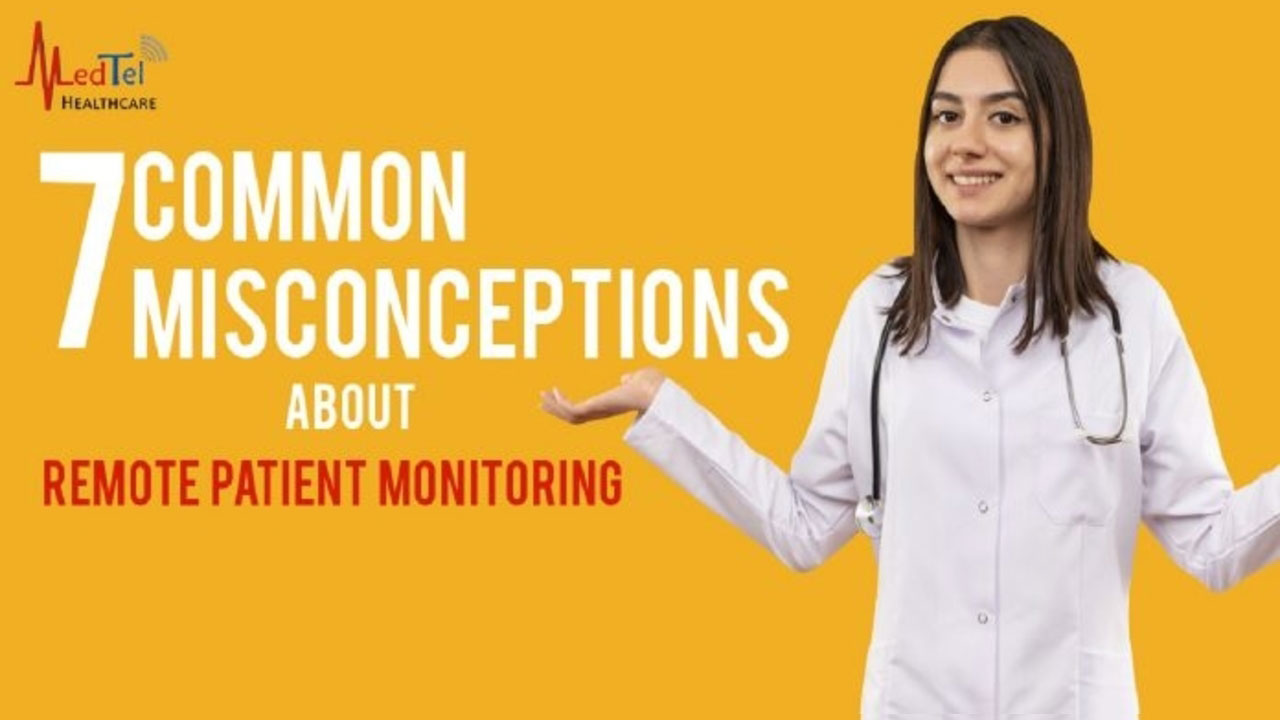7 Common Misconceptions about Remote Patient Monitoring
The past decade has seen rapid advances in digitisation of healthcare. Emerging technologies have accelerated drug development and care delivery. COVID-19 has only expedited this as care providers switch care delivery models and researchers turn to virtual clinical trials. One constant that has been at the centre of these trends is remote patient monitoring (RPM). Yet, for all its benefits, remote patient monitoring has not been fully embraced. There are misconceptions about its effectiveness, cost, and security. Here are 7 of the most common – and why they’re unfounded.
Misconception: It’s Expensive
To the uninitiated, remote patient monitoring can seem expensive. Wearable devices, telehealth software, tech training etc. can appear to warrant high cost. However, this is a myth as RPM can drive down healthcare costs in the following ways:
- It eliminates unnecessary visits: With care providers being able to monitor patient health from afar, the rate of in-person visits reduces. Readings of heart rate, breathing, blood pressure, blood sugar, and other vitals are collected remotely, which eliminates the need for patients to personally visit clinics. Remote patient monitoring also reduces the number of unnecessary hospital re-admissions as doctors can prescribe care by evaluating the collected biometrics and engaging with patients via phone, videoconferencing, interactive voice response (IVR), etc.
- It improves communication: Lack of proper self-disclosure, geographical barriers, and expensive patient travel costs can prevent doctors from dispensing the right care. With remote patient monitoring, all these factors are negated. Doctors can catch ailments sooner, provide treatment more efficiently, and consequently, reduce re-admissions which decreases healthcare costs.
Misconception: It’s Not Secure
Data security is the need of the hour and patients’ fear over its compromise is understandable. However, remote patient monitoring and telemedicine platforms are secure – and becoming increasingly more so. Many technologies are compliant with the highest security standards such as the Health Insurance Portability and Accountability Act (HIPAA). Healthcare organisations can ensure that the technologies they use meet these standards.
Misconception: The Technology Is Too Complex
Digitization of healthcare in India is not as old a concept as it is in the West, so it’s understandable that healthcare organizations may deem it too complex. However, it’s not impossible to use and the returns are massive. Real-time health information, automated administrative tasks, accurate patient data collection, improved communication, and increase awareness are just some of the benefits. Healthcare organizations can look for remote health monitoring solutions that are user-friendly, have an interface to access information from all channels, have a specialty care solution, have customizable options, and offer data analytics features to help derive insights to improve healthcare delivery.
Misconception: It Doesn’t Have Great Patient Outcomes
It’s often argued that remote patient monitoring doesn’t enhance patient outcomes but this is simply not true. In fact, RPM empowers patients to manage and actively participate in their own health better. On the other hand, doctors can closely monitor their patients over time by using their data to develop a tailored care plan. This level of care is not limited to patients in urban areas either. Remote patient monitoring provides easy access to quality care for people in remote regions. By engaging patients, doctors can encourage them to embrace health recommendations and give them the knowledge to make informed decisions about their health.
Misconception: It Removes the Human Element
A common misconception of remote patient monitoring is that it ‘de-humanizes’ care. However, doctor-patient relationship is built on more than a physical exam; it’s built on proper communication and trust. When done right, remote patient monitoring can create a solid relationship of continued care, where patients learn to manage their health while trusting their doctors, and doctors deliver quality care by trusting in their patients’ ability to manage their health. This symbiotic relationship enhances engagement and leads to better care overall.
Misconception: It’s Inferior to Physical Exams
It’s true that a physical is important for doctors to glean information about a patient’s health. However, there are many conditions that don’t need one. Remote patient monitoring can provide key insights into blood pressure and sugar levels, heart rate, weight, physical activity etc. It also results in quick action by care providers as the metrics are relayed in real time. No long waiting periods at clinics or having to deal with unavailability of doctors. Through remote patient monitoring, patients can receive reminders about medication, diet, sleep, how to reduce stress and more.
Misconception: It Increases the Risk of Malpractice
Malpractice risks exist with and without remote patient monitoring. Proper communication (educating patients about telehealth), establishing appropriate doctor-patient relationship, documenting adequate patient medical data, ensuring data privacy and security, and meeting high standards of care can all minimize the risk of malpractice suits. Healthcare providers should also thoroughly familiarize themselves with telemedicine laws to mitigate the possibility of malpractice.
The sudden surge in telehealth, a relatively new healthcare delivery model, has understandably revealed the misgivings people have. However, it will continue to play a huge role in healthcare so it’s important to understand its possibilities. By debunking myths, doctors and patients alike can harness its full potential and make it an indispensable part of the healthcare system.
